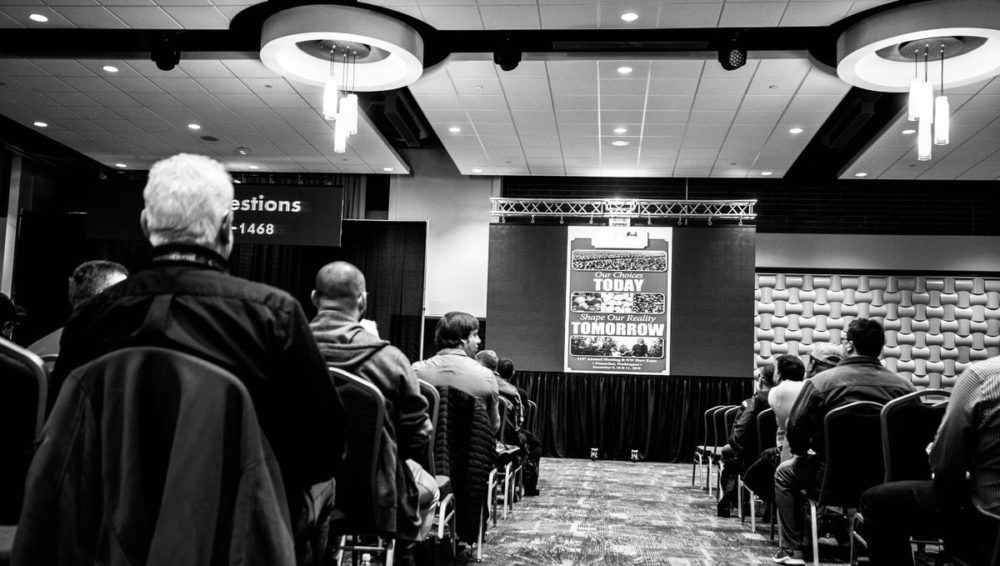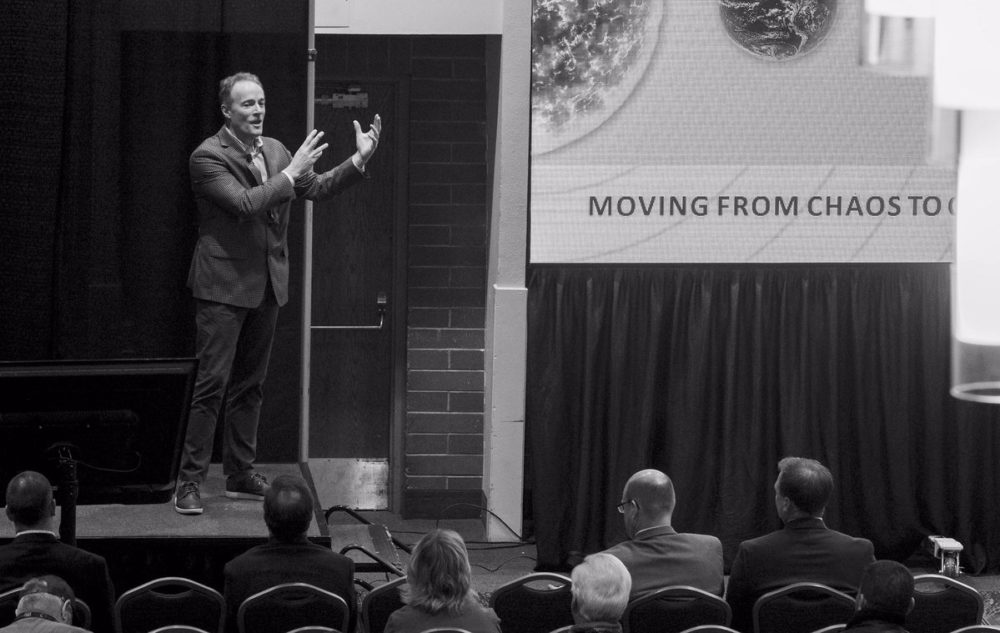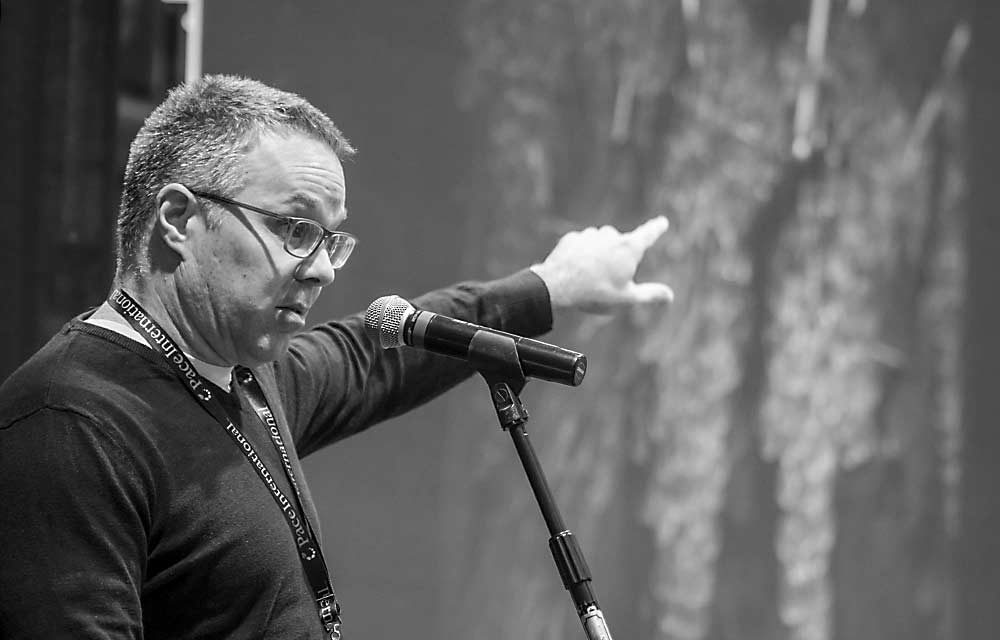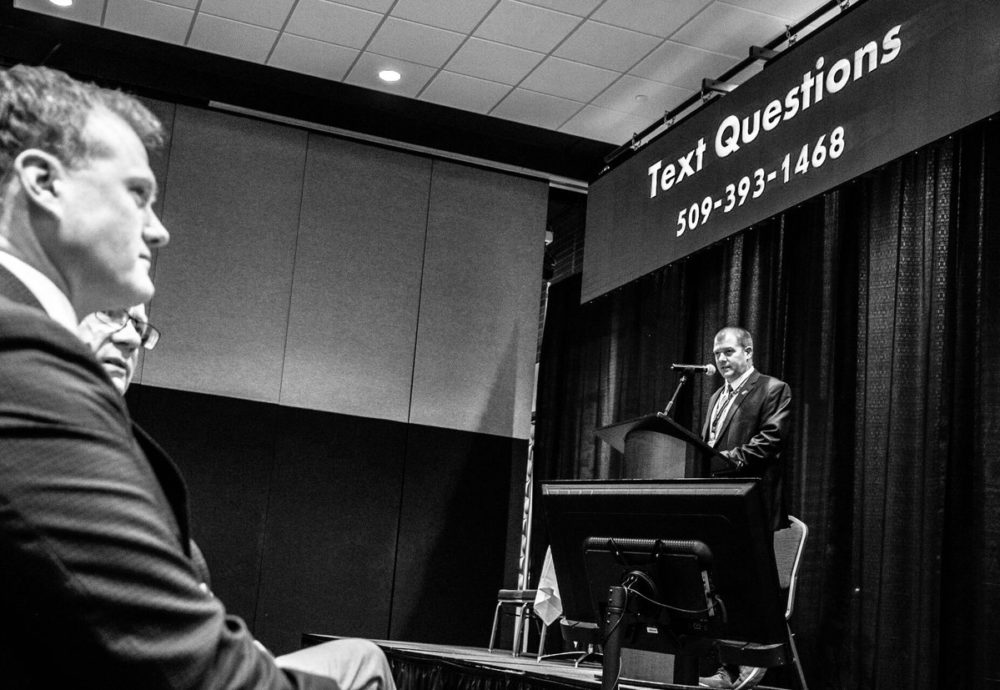
The Washington State Tree Fruit Association’s Annual Meeting kicked off on Monday morning with trade, technology and some unconventional insights from an economist.
“Think of technology like craft beer,” said Andrew Busch, the former chief market intelligence officer for the U.S. Commodity Futures Trading Commission. He recalled the first time he tried craft beer and ended up enjoying the flavors but was caught off guard by the high alcohol content. “It can sneak up on you and change everything.”

Technology makes things more efficient, especially when it comes to labor, but it also drives down inflation, making debt harder for businesses to pay back, Busch cautioned, refering to a future of slower economic growth and continued trade challenges.
The tree fruit industry has been waiting for technology to change everything — in the form of a highly anticipated apple harvester — but building that sort of robot turns out to be much harder than people thought.
Carnegie Mellon University engineer George Kantor explained that it’s because a robot that can pick apples requires innovation in three main fields of AI technology: mobility, vision and perception, and manipulation.
“Technology innovation takes a long time,” Kantor said, especially when it comes to the mechanical robots. His students can test 100 algorithms in a year, but only one or two mechanical prototypes.

He highlighted the progress in the first two categories: autonomous vehicles and vision and perception systems are coming into their own and companies are commercializing these technologies.
Think: driverless bin haulers and crop load assessment. Harvesting and pruning robots are coming, he said, but in the meantime, growers should think about adopting systems that make fruit more visible to camera eyes.
When it comes to startup companies with new technology, growers should think about buying a service as a vote of support, Kantor said. Investors look for customers and demand when offering the capital that can help these new technologies scale. “You are investing in a capability that might not make it to viability without that investment,” he said.
Investors look for customers and demand when offering the capital that can help these new technologies scale. “You are investing in a capability that might not make it to viability without that investment,” he said.
To be successful, technology needs to be affordable and adaptable and help growers maintain profitable businesses, said Ines Hanrahan, executive director of the Washington Tree Fruit Research Commission. The commission supports a wide variety of technology development, from robotic harvesters to precision sprayers.
“We all know that the availability of labor, the peak demand of labor, this is one of our Achilles heels,” she said. The largest cost is picking, but that doesn’t mean the only solution is the obvious mechanical picker. Disease detection, more efficient spray application, crop load management and more could all improve orchard costs and efficiency.
The commission is working to leverage relationships with other industry groups and research teams to combine forces to support development of critical technologies with wide-ranging benefits, she said.
Do new apples constitute a new technology? Debatable. But no doubt they have altered the landscape for the apple industry, especially when it comes to marketing. The final panel of the day featured three marketing experts discussing how the proliferation of apple varieties is changing the industry.
“If you walk into a grocery store, what’s painfully obvious is that choices have exploded,” said Steve Lutz, the vice president of insight and innovation at Category Partners, citing the beer aisle. “If you think the apple category is complex, try being a craft brewer.”
The challenge is that new apples seem to drive interest and loyalty, but not yet the volume. Still, all signs point to premium apples becoming the primary apples, he said. “Commodity foundations are crumbling, even if you are Budweiser.”
—by Kate Prengaman







Leave A Comment